How to create a drought-tolerant garden: tips for gardening in dry climates
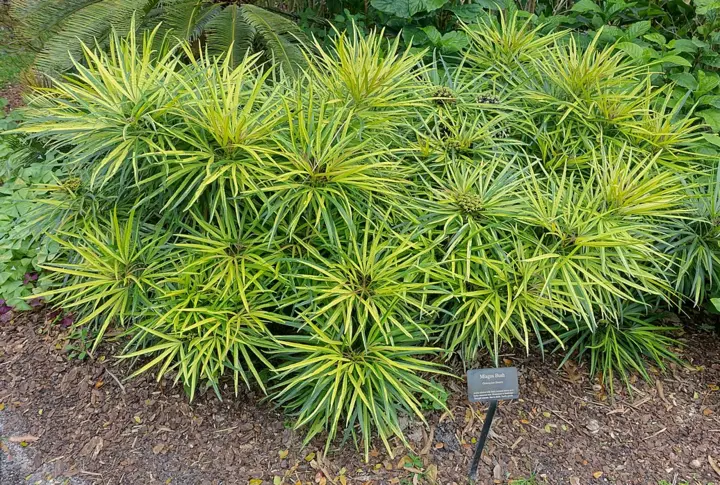
Creating a drought-tolerant garden is a real challenge in dry climates, where farmers and gardeners in those areas suffer from water scarcity and high temperatures. However, enjoying a bright and beautiful garden is not impossible. In this article, we will give you valuable gardening tips in dry climates to create a drought-tolerant garden.
Show key points
- Selecting drought-tolerant, low-maintenance plants such as cacti and native species is essential for creating a sustainable garden in dry climates.
- Improving soil quality through proper aeration, organic matter, and mulching helps retain moisture and supports healthy plant growth.
- Implementing efficient irrigation systems like drip irrigation and smart watering schedules conserves water and ensures plants receive adequate hydration.
- ADVERTISEMENT
- Creative use of space, including vertical gardening and multi-layer containers, allows maximum plant growth while minimizing water use.
- Incorporating annuals enhances soil quality, reduces evaporation, and provides seasonal color and texture to the garden.
- Consistent care, including monitoring plant health, proper pruning, and pest control, is vital to maintaining a vibrant drought-resistant garden.
- With thoughtful planning and perseverance, it's possible to enjoy a beautiful and eco-friendly garden even in regions challenged by heat and water scarcity.
1. Choosing the right plants: tips for gardening in dry climates.
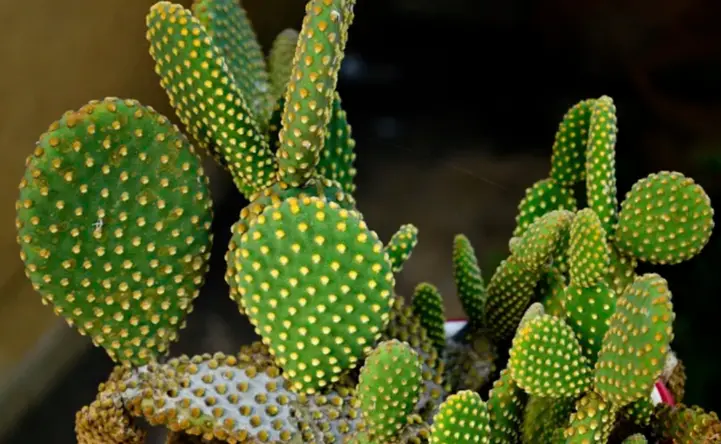
Choosing the right plants is one of the key factors for creating a drought-tolerant garden successfully in dry climates. Plants must be able to adapt to dry and hot conditions and tolerate water deficiency well. Fortunately, there are many plants suitable for gardening in dry climates, which add beauty and great colors to the garden. Here are some creative tips for choosing the right plants for your garden in a dry climate:
Recommend
1. Find climate-friendly plants: Choose plants that grow naturally in areas with dry or desert climates. These plants may be drought tolerant and need less water to grow and thrive.
2. Look for plants with small leaves and low porosity: Plants with small leaves and low porosity have the ability to reduce water loss through evaporation. Choose plants such as cacti, fatty twigs, and short grasses that stand out.
3. Stay away from plants that need frequent watering: Avoid plants that need frequent watering and consume large amounts of water. Replace them with cacti and drought-tolerant plants for a garden that combines beauty and water economy.
4. Look for plants that tolerate extreme conditions: It is preferable to choose plants that withstand extreme conditions and sudden changes in temperature. Those plants will be vigorous and sustainable in dry climates.
5. Consult local experts: Consult local gardeners or gardening experts in your area. They may have the necessary knowledge about plants suitable for gardening in dry climates that suit the topography of the area and save water.
6. Experiment and adapt: Don't be afraid to experiment with a variety of plants and monitor their response to arid climates. You may discover new plants that thrive spectacularly in your garden and enhance their overall beauty.
By choosing the right plants and using creativity in their coordination, you will be able to create a wonderful garden that tolerates drought in dry climates. Enjoy the gardening experience and continue to prepare to meet the challenges of a dry climate through innovation and perseverance.
2. Soil and fertilization: How to make the soil drought tolerant and offer proper fertilizing.
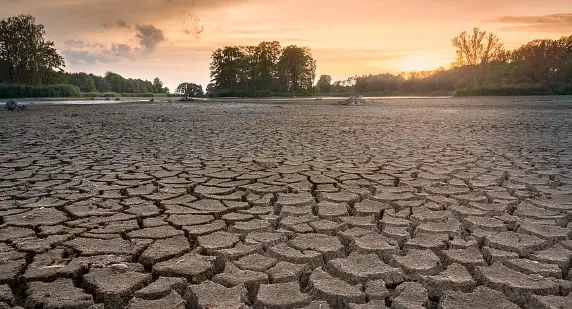
Soil is the foundation on which plants grow, so caring for soil quality is vital to creating a drought-tolerant garden. Drought-tolerant soils provide a healthy environment for roots that absorb water and nutrients, and maintain soil water balance. Here are some tips to make the soil drought-tolerant and offer the right fertilizing for your garden:
1. Soil Inspection and Analysis: Before you start preparing the soil for your garden, do a soil check and analysis. This step will help you understand the characteristics of the soil in your garden, such as sand or clay soil content, and the acidity level (pH). You will get the results of a soil analysis that will help you take appropriate steps to improve soil quality.
2. Improve soil aeration: You can improve soil aeration by adding organic matter such as cow manure or chicken manure and decaying plant residues. These substances help improve the soil's ability to absorb and retain water, and contribute to improved airflow around plant roots.
3. Compacted soil: If there is compacted soil in your garden, you should loosen it by using a garden fork or ground clamp. This step will help improve the flow of water in the soil and enable the roots of plants to grow properly.
4. Use a protective layer: A layer of organic matter such as grain straw or wood dust can be applied to the soil surface. This layer helps reduce water evaporation and protect the soil from the influence of direct sunlight, keeping the soil moist for longer.
5. Use organic fertilizing: Fertilizing the garden on a regular basis promotes plant growth and helps promote root health. It is preferable to use organic fertilizer such as decomposing garbage manure or organic tea fertilizer, as it contains the necessary organic matter and nutrients that help prolong the water storage period of the soil.
6. Correct watering: The plants in your garden should be watered with enough water to saturate the soil and roots of the plants. Use temporary irrigation systems that supply water at specific intervals instead of watering frequently. This will help prevent excess water from collecting and losing it due to evaporation.
When you focus on making the soil drought tolerant and offering proper fertilizing, you'll help promote plant health and durability in the dry garden. Don't forget to follow local guidelines and recommendations specific to your area to ensure success and sustainability in your gardening.
3. Irrigation system: effective strategies to conserve water and provide effective irrigation.

An effective irrigation strategy is one of the most important factors to consider when creating a drought-tolerant lawn. When water is cut off or scarce in dry areas, an irrigation system must be provided to ensure more accurate exploitation of this precious resource. In this section, we will provide you with effective strategies for conserving water and providing effective irrigation in your drought-tolerant garden.
1. Adoption of drip irrigation system: Drip irrigation is one of the most effective ways to conserve and save water. Drip points are placed at the roots of the plants, allowing direct and accurate distribution of water, without wastage. Make sure that the drip points are properly distributed for each plant and adjust the water pressure according to the needs of different plants.
2. Use smart irrigation techniques: Smart irrigation technologies can be used to improve water use efficiency and saving. This involves using soil sensors to measure moisture content and determine when plants should be watered. Automatic control systems can also be used to adjust the amount of water to be added according to weather conditions and plant needs.
3. Grow drought-resistant plants: Choosing drought-resistant plants is vital to conserve water and provide effective irrigation. Look for plants that tolerate dry conditions and need a small amount of water. These plants include cacti, some wild herbs, olive trees, and pine.
4. Ground mulching and use of insulating materials: Ground covering and insulating materials can be used to keep the garden soil moist and reduce water evaporation. Straw, tree shell, or gravel can be used as ground mulching around plants to help retain moisture. Insulating materials such as polymers can also be used to help reduce water evaporation from the soil.
5. Correct watering scheduling: Watering must be properly scheduled to avoid wastage and waste. It is preferable to water the plants early in the morning or evening, when it is cooler and less evaporated. Be sure to determine the appropriate watering duration so that the plant receives the right amount of water without wasting any drop.
6. Respect the local environment: You should take into account the local environment when planning your irrigation system. They exploited rainwater by directing it to collection ponds or using a rainwater collection system. Washing water or bath water can also be used for irrigation instead of plain water.
4. Organize the space: how to properly use the space and reduce waste.
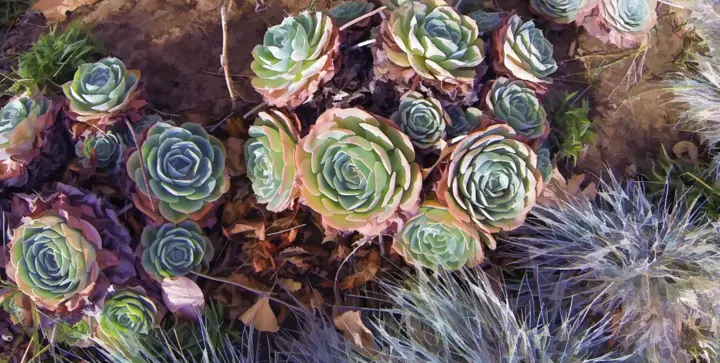
In creating a drought-tolerant garden in dry climates, space regulation plays a crucial role. Properly organizing the space can help exploit every inch of land and make the most of the available water. Here are some creative tips and ideas for organizing the space in your garden:
1. Think vertically: Planting plants vertically instead of horizontally can be an ideal solution to save space. You can use vertical fences or metal poles to support climbing plants such as citrus or grapes. This method will help to exploit the vertical space and increase the number of plants in the garden.
2. Use of ponds: Ponds and boxes can be used to grow plants instead of allocating space in the ground. Sinks can be placed on the balcony, on wall surfaces or even on pillars. This approach gives greater flexibility in locating plants and can be easily transported depending on your needs.
3. Use multi-layer containers: The space can be effectively utilized by using multi-layer containers such as trapons or pots. Arranging plants in different tiers allows for increased space to grow more plants without increasing the horizontal space used.
4. Boundaries and periphery: Boundaries and periphery can be exploited to grow plants in smart ways. You can use fences or wall clamps to stabilize climbing plants and exploit vertical boundaries. Narrow ends of the garden can also be used to grow young plants such as aromatic herbs.
5. Dark places: Do not ignore dark places in the garden. They can be exploited using plants that thrive under shade such as mountain or large-leaved plants. They can be used in places where light is limited to preserve beauty and cover empty spaces.
6. Fruit trees with the ability to provide shade: It may seem strange but organizing the space can also include choosing fruit trees that allow you to enjoy fruits and provide shade at the same time. Choose trees such as grapes, pomegranates or lemons for this purpose.
5. Caring for annuals: How to use annuals to improve garden drought tolerance.
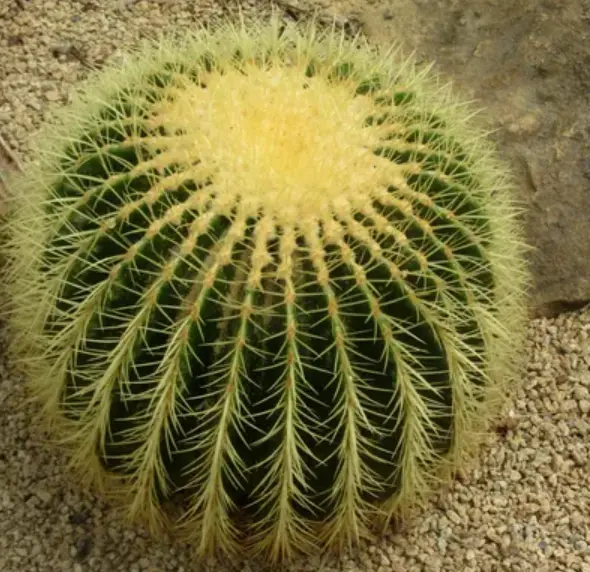
Annuals are one of the most important elements of gardening in dry climates, as they are characterized by their ability to grow and thrive in conditions of lack of water and high temperatures. Annuals offer a variety of advantages, from soil rearing to reducing water evaporation and reducing resource use. In this section, we will explore how annuals can be used to improve garden drought tolerance in creative and practical ways.
1. Choose the right annuals: Before planting any plant around me, you should choose plants that tolerate the dryness of the area and suit the surrounding climate. Look for plants that are drought-tolerant, use less water to grow, and rely on a strong root system to survive.
2. Use annuals for soil rearing: Annuals improve soil breeding thanks to their deep and strong roots. These roots absorb water and nutrients from the deeper layers of the soil, helping to improve soil structure, aeration and erosion.
3. Reduce water evaporation: Annuals improve the efficiency of water use in the garden. Annuals can be used to cover the ground, preventing water evaporation and keeping the earth moist. Annuals can also be used to create natural wind barriers and block direct sunlight, thus reducing water evaporation.
4. Improve sustainability: Annuals help promote garden sustainability in dry climates. Thanks to the ability to provide water, nutrients and soil rearing, annuals reduce the garden's need for external resources and increase its long-term sustainability.
5. Beauty and diversity: Annuals do not retreat from beauty and diversity. Many different varieties of annuals are available that add a unique and decorative touch to the garden. Take advantage of the variety of different colors, shapes and sizes of annuals to bring beauty and excitement to your garden.
6. Love and care: how to care for the garden and ensure its sustainability in dry climates.
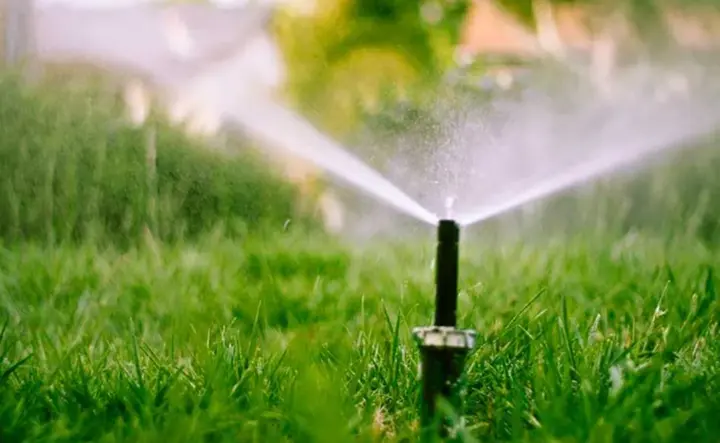
To keep your garden drought-tolerant and beautiful looking throughout the rain breaks, you need love and constant care. No matter what measures they take to make them drought-tolerant, they cannot rely on themselves. Here are some tips to take care of your garden in dry climates and ensure its sustainability.
1. Constant monitoring: You should be constantly informed about the condition of the plants in your garden. If you notice any sign of weakness or dehydration, intervene immediately and take the necessary measures.
2. Regular watering: Do not let your lawn dry out of watering. Set a regular watering schedule and make sure the plants are getting enough water. Use effective irrigation methods such as drip to save water and reduce waste.
3. Keep the soil moist: Use a layer of mulched soil or straw to keep the soil moist and reduce water evaporation. A thin layer of compost can also be applied to help retain moisture.
4. Dealing with pests: Since the dry climate creates a favorable environment for pests, you must be prepared to deal with them. Use environmental and safe methods to eliminate pests and protect your garden.







